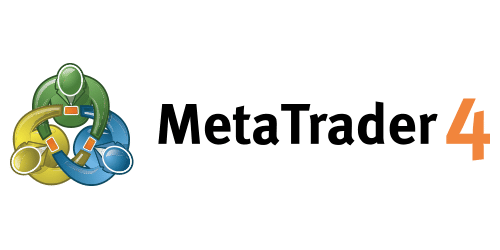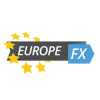You may be wondering, are there any tangible reasons why MT4 is now the preferred forex trading platform? Aside from being one of the oldest in existence, there are several perks the software offers that have cemented its place as a mainstay.

They say ‘old is gold,’ a fitting statement to describe the legacy of forex’s most sought-after trading platform, MetaTrader 4. Although the application has its fair share of naysayers who believe it’s old-school, the developers of MT4 have gained somewhat of a monopoly due to massive appeal.
You may be asking yourself why the application has become the industry standard. This article will look at a few objective reasons for this dominance.
Early adoption
MetaQuotes released MT4 in 2005, having started the MetaTrader series a few years prior. At the time, the spot forex market was available to retail traders for almost close to a decade. Despite its debut in around 1996, few people knew about the forex market, meaning limited trading platforms existed aside from those provided by MetaQuotes.
The release of MT4 was a significant improvement on previous versions. Although adoption from the wider trading communities and brokers alike was slow, its popularity began peaking from 2007 onwards due to, among other benefits, the simple user interface and supreme ability for creating expert advisors.
Although several markets are tradeable using MT4, forex is the most popular for the platform. Fortunately for the software developers, the gradual rise from the mid-2000s in forex becoming the largest financial market globally complimented the adoption of their application.
User functionality, compatibility, and user security
As with any software, the user experience is one of the most critical factors. While some may argue that MT4 has an ‘old school’ look, most forex traders prefer the simplicity nonetheless.
All the essential functions like drawing tools, placing & setting orders, and adding indicators can be learned quickly by a beginner, making it truly user-friendly. Furthermore, MT4 is compatible with numerous computer operating systems (namely Windows, Mac, and Linux) and mobile devices (Android and iOS for smartphones and tablets, respectively).
As a 32-bit single flow platform, the software can run efficiently on slightly older computers without needing advanced hardware. It can also perform just as well even with a weaker internet connection as it’s not resource-heavy. Surprisingly, traders regard MT4 as particularly secure and stable since there is 129-bit key encryption for the data exchange.
Programming functions
The programming aspect of MT4 was one of its main selling points when it was still obscure. Trading robots or expert advisors are still an area of high demand with traders and programmers, for which MT4 has received a wide acknowledgment.
The range of robots, custom indicators, and scripts that strategy developers can create and modify is quite astounding in range. MQL4, which is MT4’s native programming language, is not complex to learn, though it can achieve a well-functioning expert advisor backed by a thriving community within the platform for additional support.
Broker licenses
For any brokerage owners, one of the considerations they need to make is which software license they will purchase. Before 2018, many new brokers chose to adopt the MT4 platform because of its licensing structure.
Although the one-time fee cost at least $100 000, plenty could negotiate for a lower deal. Unlike other platforms like cTrader that charge based on the volume of trades made by clients, MT4 only charges a monthly support fee.
Alternatively, a typical business model is the white label solution where one broker leverages the infrastructure of another, which includes the trading software. With this model, the discount on the licensing fee can reach up to 90%. As numerous brokers nowadays are actually white labels, using primarily MT4 is more cost-effective.
Customization and features
Finally, MT4 has a broad range of customization options not found on too many trading platforms where each trader’s platform looks different aesthetically. Some of the notable ways one can customize their trading platform are:
- Traders can use more than 100 different colors for their line charts, bar charts or candlesticks, backgrounds, stop levels, etc.
- Users can fine-tune every aspect of color in terms of technical indicators such as moving averages, RSI (Relative Strength Index), and MACD. Furthermore, the levels of each indicator are also adjustable.
- All charting tools like Fibonacci, channels, and trend lines are highly customizable where color is concerned.
- Profiles allow users to rearrange or group charts and other instruments in any order they prefer.
Features-wise, the platform also packs a punch with the following:
- Nine time-frames
- 31 graphical objects
- Four types of pending orders
- Three types of order execution
- 30 built-in indicators
- Hedging allowed
- Push notifications for price alerts
- App Store for third-party trading products
- Broker notifications directly from the platform
What about the disadvantages?
No amount of praise for a product can overwhelm any disadvantages.
Some of the few drawbacks include:
- Limited backtesting capabilities for EAs (expert advisors).
- MT4 only provides level 1 market depth (only bid and ask prices).
- High-frequency trading isn’t optimal on MT4 due to its somewhat slower responsiveness compared to more superior platforms.
- The user interface and layout aren’t as slick or modern.
Conclusion
The forex industry may be one of the few where an old piece of software still receives praise despite the plethora of more advanced applications that have succeeded it. This point, however, proves that simplicity is of the utmost importance for any forex trader.
Although plentiful options exist with better interfaces and features, a trader’s skill to be consistently profitable isn’t inherently affected by the platform they use.








Leave a Reply